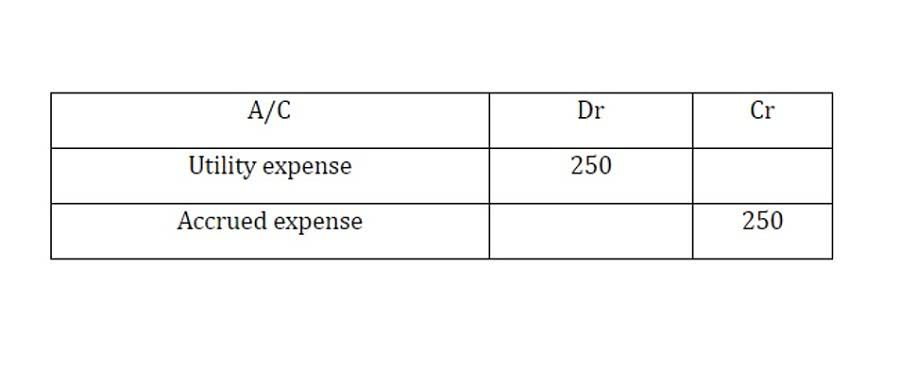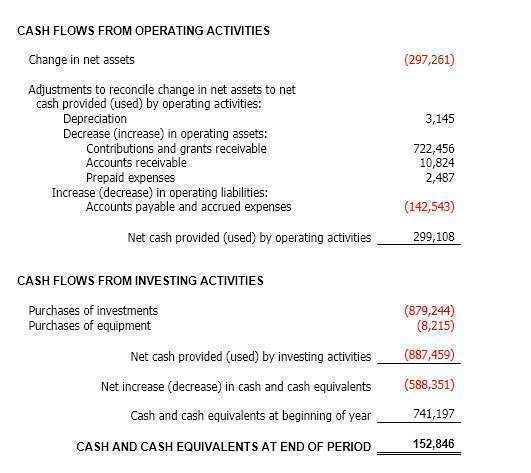Content

If a company still issues paper checks, they’re controlled and recorded in sequential numerical series. Any erroneous checks are voided and retained to control the numerical sequence. When it comes to accounting there are 8 basic steps that are followed in an accounting-cycle.
The vast majority of firms worldwide, moreover, manage, track and update accounts using accrual accounting and a double-entry system. When setting up the firm’s accounting system, accountants first create a definitive inventory of the system’s active accounts.
The trial balance format is that every general ledger account balance or total is listed without the details. With a double-entry bookkeeping system, total debits should equal total credits.
The Trial Balance
When you have credits and debits from your transactions that don’t balance you have to make corrective adjustments accordingly. Beginning with cash accounts, each balance sheet account should be reconciled at least monthly to find and correct errors with adjusting journal entries. Compare each of the bank accounting statements to its general ledger cash account.
What is the first step of accounting process class 11?
The first four steps in the accounting cycle are (1) identify and analyze transactions, (2) record transactions to a journal, (3) post journal information to a ledger, and (4) prepare an unadjusted trial balance.
It can help to take the guesswork out of how to handle accounting activities. It also helps to ensure consistency, accuracy, and efficient financial performance analysis.
Step 1: Analyze And Record Transactions
It is a standard 8-step process that begins when a transaction occurs and ends with its inclusion in the financial statements. When it becomes clear an error exists somewhere in the system, accountants may create «temporary adjusting accounts» to restore the balance between total debits and total credits immediately. The objective then is to uncover the underlying errors, correct the errors, and close temporary adjusting accounts before the trial balance period ends.
Items are entered into the general journal or the special journals via journal entries, also called journalizing. As we walk through the steps of the accounting cycle, consider the following example. After a number of years as a successful CPA at a national firm, you decide to quit the rat race and pursue your true love — yoga.
- Accruals are revenues or expenses that were incurred, but were not previously recorded.
- Exhibit 5.The organization’s active accounts are all in view for the trial balance.
- The preparation of reversing entries is the last step of accounting cycle and it is an optional bookkeeping procedure that is not a required step in the accounting cycle.
- Your bookkeeping team imports bank statements, categorizes transactions, and prepares financial statements every month.
- The eight-step accounting cycle process makes accounting easier for bookkeepers and busy entrepreneurs.
At the end of an accounting period, Closing entries are made to transfer data in the temporary accounts to the permanent balance sheet or income statement accounts. At the end of the accounting period, atrial balanceis calculated as the fourth step in the accounting cycle. A trial balance tells the company its unadjusted balances in each account.
Recording the balance of an account incorrectly in the trial balance. Cross-indexing is the placing of the account number of the ledger account in the general journal and the general journal page number in the ledger account.
The Types Of Adjusting Entries
These are used to calculate individual balances for each account. So, the next accounting cycle step is to create an unadjusted trial balance. The second step in the cycle is the creation of journal entries for each transaction. Point of sale technology can help to combine steps one and two, but companies must also track their expenses. The choice between accrual and cash accounting will dictate when transactions are officially recorded.
The unadjusted trial balance is then carried forward to the fifth step for testing and analysis. Theaccounting cycleis a basic, eight-step process for completing a company’s bookkeeping tasks.
Create An Adjusted Trial Balance
Remember that when you recognize income and expenses depends on the type of accounting you use. If you run on cash accounting, you’ll look for every time that cash changed hands during the period. If you’re using accrual accounting, you’ll only recognize financial transactions when incurred.
If the total of the debit column does not equal the total value of the credit column then this would show that there is an error in the nominal ledger accounts. This error must be found before a profit and loss statement and balance sheet can be produced.
The operating cycle can be expressed in a formula as the sum of the financial analysis ratios for days’ sales outstanding and the average collection period. Understanding the operating cycle in your business is essential for cash flow management. Depending on the accounting period, the activities in this cycle are repeated through each accounting period – month, quarter, year. Inventory – in a periodic inventory system, an adjusting entry is used to determine the cost of goods sold expense. This entry is not necessary for a company using perpetual inventory. Estimates – An adjusting entry for an estimate occurs when the exact amount of an expense cannot easily be determined.
Business Types
Internal transactions are exchanges that occur within your business, like moving supplies from one department to another. Give your staff the tools they need to succeed in implementing the accounting cycle. This could mean providing quarterly training on best practices, meeting with your staff each cycle to find their pain points, or equipping them with the proper accounting tools. The better prepared your staff is the more efficient they can be. With records and receipts strewn throughout your office, completing the accounting cycle can be a challenge.
What are the last five steps in the accounting cycle?
Explaining Accounting Cycle in Context
Defining the accounting cycle with steps: (1) Financial transactions, (2)Journal entries, (3) Posting to the Ledger, (4) Trial Balance Period, and (5) Reporting Period with Financial Reporting and Auditing.
Nonetheless, the accounting cycle is a process, where steps will follow naturally. This process results in all revenues and expenses being “corralled” in Income Summary . In turn, the income or loss is then swept to Retained Earnings along with the dividends. Transactions recorded in the general journal are then posted to the general ledger accounts. Though the process is mostly the same, accounting software can help identify variances and prompt users to help reconcile them without creating explicit trial balances. First, you identify what is causing the debits and credits to be misaligned.
After recording a transaction in the appropriate journals, you would also add it to the general ledger. For example, if a business sells $25,000 worth of product over the year, the sales revenue ledger will have a $25,000 credit in it. This credit needs to be offset with a $25,000 debit to make the balance zero. Use your financial statements to measure performance, make improvements, and set goals. You can also use statements to apply for loans or investments and negotiate terms with vendors. You have not recorded the interest in your books, but it appears on your bank statement. Use an adjusted entry to recognize the interest in your books.

Depending on how many accounts you have, the ledger could include many categories, including cash, accounts receivable , and notes payable and accounts payable . Once, this process was carried out completely by hand, leaving room for far more errors, but now recording and posting happen almost simultaneously. Once the accounting team corrals all transactions into the right journals, they calculate the changes that each transaction makes to the accounts in the ledger. A ledger usually exists as separate asset and liability columns on a balance sheet that keep track of changes that each transaction makes to each major account. The term “journal” is somewhat antiquated, conjuring images of leather-bound tomes and fountain pens. For most accounting teams now, this step takes place digitally on accounting-specific software. Balanced totals mean your company properly journaled and posted your closing entries.
In the accrual basis of accounting, the expenses are recorded as they occur and not when the cash is paid. At the end of your accounting period, you may find some expenses that may have occurred, but not recorded. For instance, depreciation expenses like the depreciation of equipment. Such entries, if not recorded, can give you an unclear picture of your profitability. Hence, these adjusting entries need to be made to decipher a better idea of the company’s profitability. These entries should also be posted in the journal and ledger. Cash accounting requires transactions to be recorded when cash is either received or paid.

T-accounts in the general ledger after posting journal entries.The firm’s General Ledger contains all active accounts from the Chart of Accounts. As a result, once journal entries transfer to the ledger, anyone can ask for the current balance in any of the firm’s accounts.
It’s probably the biggest reason we go through all the trouble of the first five accounting cycle steps. Through the accounting cycle (sometimes called the “bookkeeping cycle” or “accounting process”). Regardless, most bookkeepers will have an awareness of the company’s financial position from day-to-day. Overall, determining the amount of time for each accounting cycle is important because it sets specific dates for opening and closing. Once an accounting cycle closes, a new cycle begins, restarting the eight-step accounting process all over again. Three Financial Statements The three financial statements are the income statement, the balance sheet, and the statement of cash flows.
CTO Parag Agrawal Assumes New Leadership Role at Twitter — pymnts.com
CTO Parag Agrawal Assumes New Leadership Role at Twitter.
Posted: Mon, 29 Nov 2021 17:30:12 GMT [source]
While it seems like a ton of record keeping, adhering to an accounting cycle is crucial for businesses. Some bookkeepers choose to adjust their entries after they adjust the trial balance. This is a matter of preference, and as long as the trial balance is checked again after accounting for accruals and deferrals, their order does in the accounting cycle the last step is not matter. Using documents like receipts and invoices helps in identifying business transactions; be sure to hold on to them to streamline the transaction identification process. All of the steps in this cycle are necessary for double-entry bookkeeping systems. However, single-entry accounting only requires steps 1, 2, and 8.
FUREY: Canada, it’s long overdue that we drop the COVID alarmism cycle — Toronto Sun
FUREY: Canada, it’s long overdue that we drop the COVID alarmism cycle.
Posted: Mon, 29 Nov 2021 21:54:11 GMT [source]
CPA firms can review or audit the financial statements and drill down to the underlying financial transactions and accounting records to test account balances. Now that the trial balance is made, it can be posted to theaccounting worksheetand thefinancial statementscan be prepared. Transactions in a Journal are entered as and when they occur in a chronological order. A Journal is prepared on the concept of Double Entry, where every transaction affects at least two accounts, i.e. debit to one account and credit to another. All the steps of the accounting cycle are critical in facilitating the systematic dissemination of different aspects of financial information as they become due.
Author: David Paschall